5 days Prague itinerary by a local (with top attractions & hidden gems)
The good thing is that if you have five days in Prague, you can see most of the top Prague attractions and also some of the lesser visited parts of the city, which is my favourite way to avoid crowds in Prague.
There is a lot you can see in five days in Prague, but it can still feel like it’s not quite enough. I planed the 5 days itinerary based on what I think it’s realistic to fit into five days, whilst allowing enough time for breaks.
I would still recommend that you choose which attraction you want to visit inside – Prague Castle can easily take a whole day if you want to visit everywhere. But, you might like to walk around instead and save your time (and money) to visit somewhere else instead.
Whilst you will need to buy a ticket to some of the major attractions in Prague I’ve also included attractions that are accessible free of charge. I’ve also included my favourite places, attractions and cafes I like to visit in Prague. Since I live in Prague, I’ve also added places I personally like as I wanted to show you a Prague that’s a little less touristy.

How to use my 5 days itinerary guide to Prague
I’ve probably included more attractions than you can see during each day to give you options to see what you like. I’ve kept my suggestions close together – location wise – so that you can skip and move to the next attraction as you wish.
There is only so much I can add to each day and about each attraction, but I’ve written more detailed guides to most attractions, I’ve mentioned. If you see a link (underlined text) just click to find out more.
5 days Prague Itinerary Summary
Day 1 – The Old Town Square & Charles Bridge
Main Stops: Old Town Square – Ungelt Square – Klementinum – Charles Bridge – Vojanov Gardens – Waldstein Garden, Furstenberg Garden or Gardens’ Under the Prague Castle
Day 2 – Prague Castle & Lesser Town
Main Stops: New World Area – Hradcany – Prague Castle – Golden Lane – Nerudova Street – Lesser Town – St.Nicholas Church – Kampa Island – John Lennon Wall
Day 3 – Jewish Quarter & Wenceslas Square Area
Main Stops: Jewish Quarter – Paris Street – Convent of St. Agnes – Powder Tower – The Municipal House – Na Prikope Street Shopping Galleries – Wenceslas Square – Franciscan Garden
Day 4: Vysehrad & Smichovska Naplavka
Main Stops: Vysehrad Castle Grounds – Naplavka – Emauzy Monastery – Botanical Garden at Karlov – Charles Square, Operation Anthropoid Museum – Ginger & Rogers Dancing House – Slavic Island – Shooters Island – National Theatre – Cafe Slavia
Day 5: Petrin Hill & Strahov Monastery
Main Stops: Kinsky Garden – Hunger Wall – Petrin Hill Park – Lookout Tower – Strahov Monastery

Day 1 – The Old Town Square & Charles Bridge
Main Stops: Old Town Square – Ungelt Square – Klementinum – Charles Bridge – Vojanov Gardens – Waldstein Garden, Furstenberg Garden or Gardens’ Under the Prague Castle
Optional attractions along the way: Golden Ring House Museum, Maddame Tusseau, Chocolate Museum, Charles Bridge Museum, Slivovice Museum
Starting Point: Staromestska Underground Stop or Tram Stop (17, 18, 2, 3) and then 5 minutes walk to Old Town Square
Optional – evening walk around the Charles Bridge to take great photos of the famous bridge.

Day 1 – Morning
We will start our first day in the heart of Prague at Old Town Square, where you can admire the beautiful Gothic, Baroque, and Romanesque houses around the square. The Astronomical Clock on the Old Town Hall is the main attraction here and if you arrive just before the whole hour you will be able to see the clock’s figures moving as they come out from little doors and turn around.
There is also a pretty amazing view from the top of the Town Hall and if you decide to visit, you can also learn more about the Astronomical Clock mechanism and it’s history. The tickets costs 390 CZK (concessions available) and you will need about 90 minutes to comfortably the whole attraction.
For a morning coffee, the best place I can recommend right on the square is the cafe at the Scout Institute, which is right next to the house ‘U Minuty’, which has the beautiful black and white figures decorations. The house ‘U Minuty’ was also previously a house, where Franz Kafka, famous Czech writer lived and you can follow his life in my guide to Kafka’s life in Prague and visit other houses and places where he lived, worked and visited.
Next, we will head across the square to the Tyn Church, whose Gothic spires dominate the Old Town Square. The Tyn Church is open during the day and entry is free like in many other beautiful churches in Prague. I always find this church quite dark inside and not as nicely decorated as some of the others, but that’s just because I really like the churches built by the Czech architect Santini, which are full of light and are elegantly decorated inside.
Behind the church, you’ll find Ungelt Square, a historic marketplace with charming medieval architecture that is a complete contrast to the busy main square. I usually stop here for another coffee at the cute retro car serving coffees to go.
This square has also one of my favourite shops to get souvenirs from Prague – the Botanicus. They sell the most amazing soaps, shower gels and other cosmetics all made locally in Czech Republic from natural ingredients, flowers and herbs.

The cobbled streets around the Ungelt square are pretty special, take your time to explore them and then head towards the Celetna Street to see the House of the Black Madona, an excellent example of Cubist architecture and home to the Czech Museum of Cubism and also a stylish cafe with the most amazing looking cakes (try the Czech traditional sweet pastry ‘Vetrnik’ made in a ‘cubist’ style as a square instead of round circle, it’s delicious!)
Next, we will retrace our steps towards the Karlova Street and walk through the Klementinum Area, a historic complex that includes a stunning Baroque Library. You can join a guided tour to explore this beautiful site and climb the tower. The tickets are 300 CZK (concessions are available) and the tour lasts about 60 minutes.

Day 1 – Afternoon
From the Klementinum, follow the King’s Route, a historic path that takes you through some of Prague’s most picturesque streets, traditionally used by Bohemian kings on their way to their coronation at Prague Castle.
Cross the iconic Charles Bridge, decorated with statues and offering spectacular views of the Vltava River and the Prague Castle.
Once across, turn right through the little side streets and take a relaxing stroll in the serene Vojanov Gardens, one of the oldest gardens in Prague, where you can see colourful peacocks and have a picnic on the grass.

There are also several restaurants and cafes in the area (mostly quite pricey), but I’ve really liked the traditional food (and the atmosphere) in the Seminar Cafe (U Luzickeho Seminare 15) and of course my favourite cafe with boho decor called Cocovanka ( U Luzickeho Seminare 107/34)
After your garden visit, head to the Gingerbread House Shop to indulge in some delicious and intricately decorated gingerbreads (the sweet honey smell in the shop is amazing!)
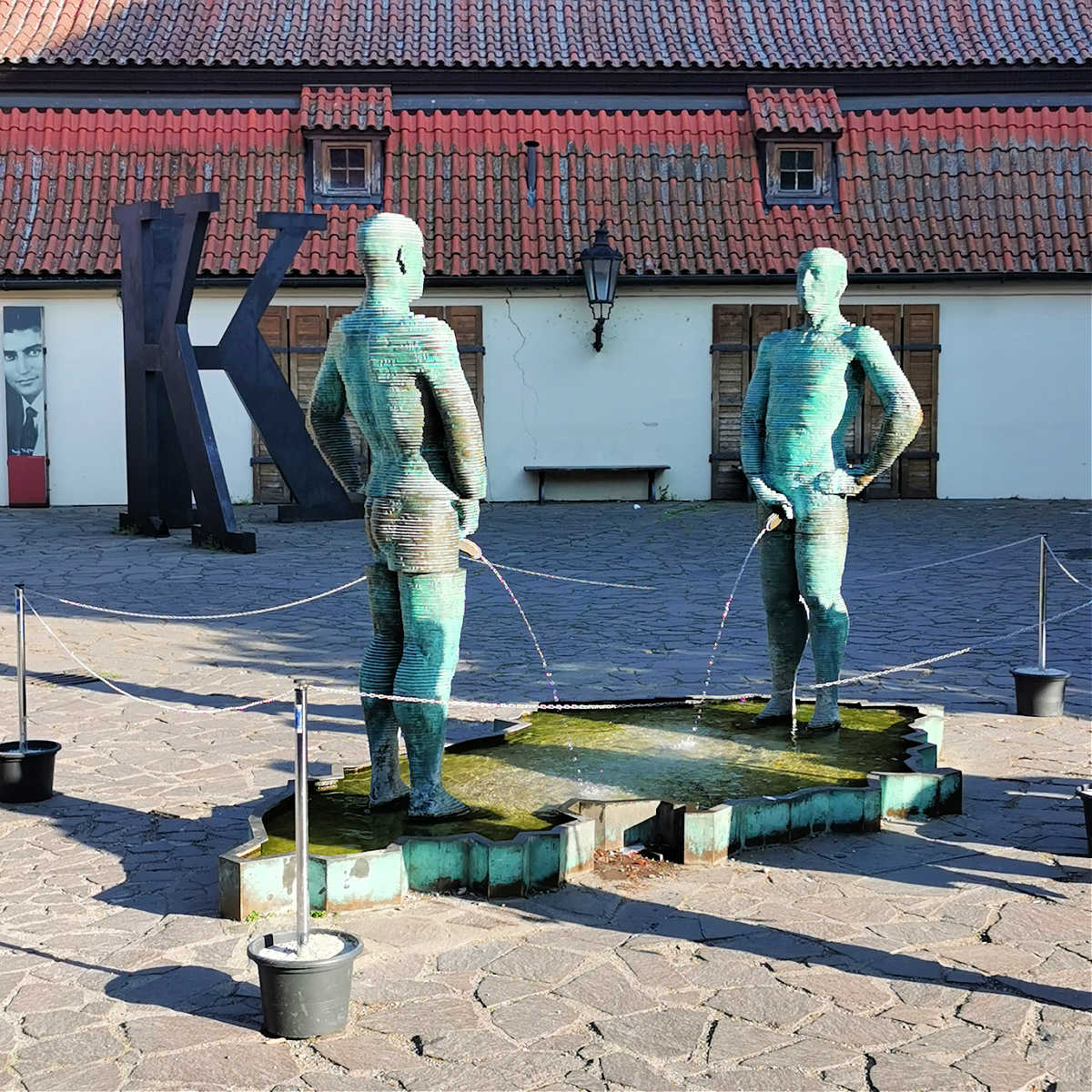
If you are a literary fan, you can pop in to the Kafka’s Museum opposite which has exhibits on the famous writer’s life and work. In front of the museum is one of the modern art sculptures by artist David Cerny which shows two naked men urinating into the pool which is in the shape of Czech Republic.
Don’t miss a visit to The Narrowest Street in Prague, which leads you to the Vinarna Certovka, which is so narrow it has a traffic light for pedestrians. One of my favourite fun facts about Prague is that it was never meant as a street, but it’s purely a gap between the houses to prevent the spread of fire in medieval times.

We will stay in the gardens for a little longer, because just round the corner there is the Waldstein Garden, which is a beautiful Baroque garden with sculptures, fountains, and more peacocks. If you are lucky, they put on free concerts in the summer and it’s the perfect way to finish your first day in Prague.
If time allows, make your way to the Furstenberg Garden or the Gardens Under the Prague Castle, which have lovely views of Petrin Hill and the historic central Prague.
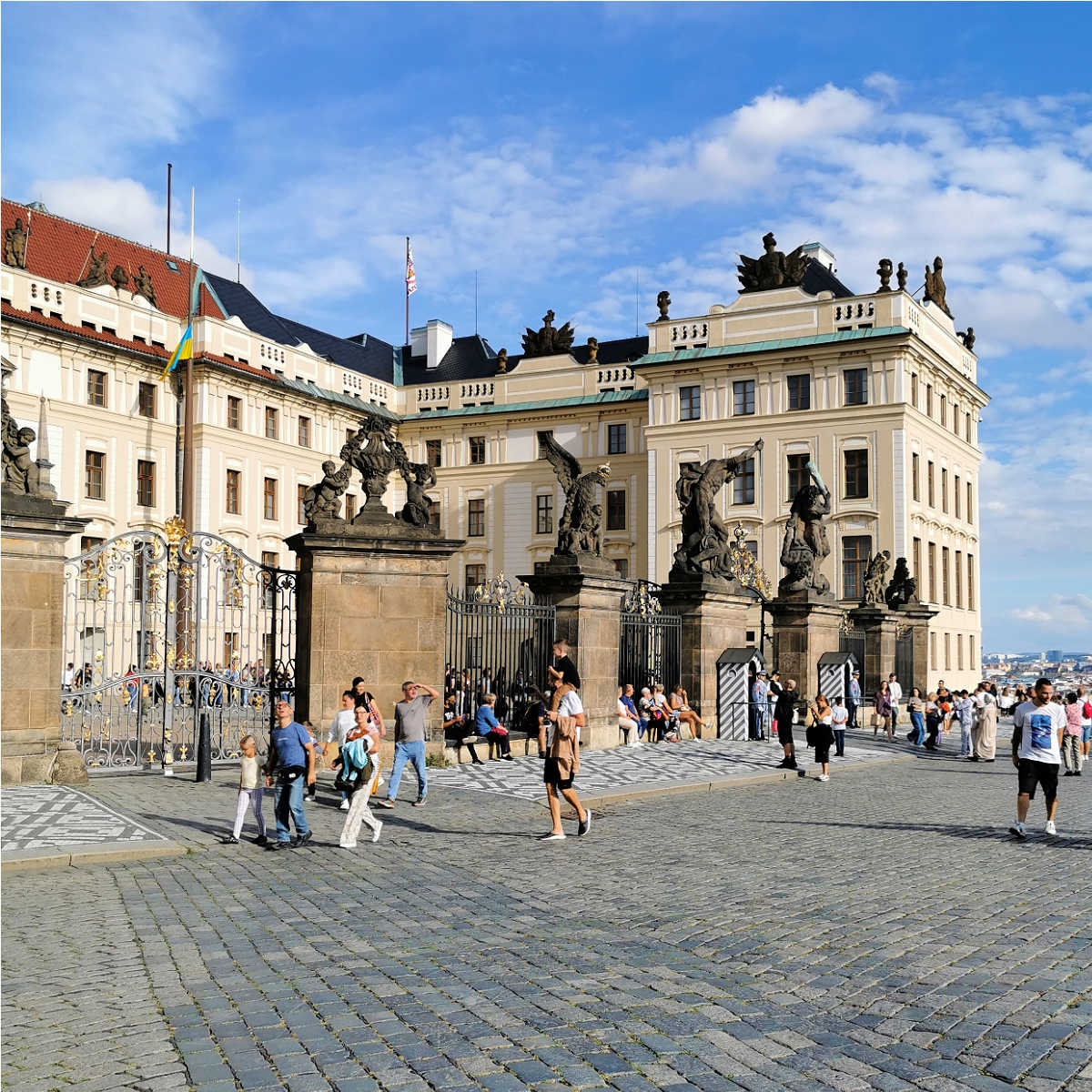
Day 2 – Prague Castle & Lesser Town
Main Stops: New World Area – Hradcany – Prague Castle – Golden Lane – Nerudova Street – Lesser Town – St.Nicholas Church – Kampa Island – John Lennon Wall
Optional attractions along the way: Vrtba Garden
Starting Point: Pohorelec Tram Stop: Take the tram number 22 from the centre of Prague or Malostranska Underground Station
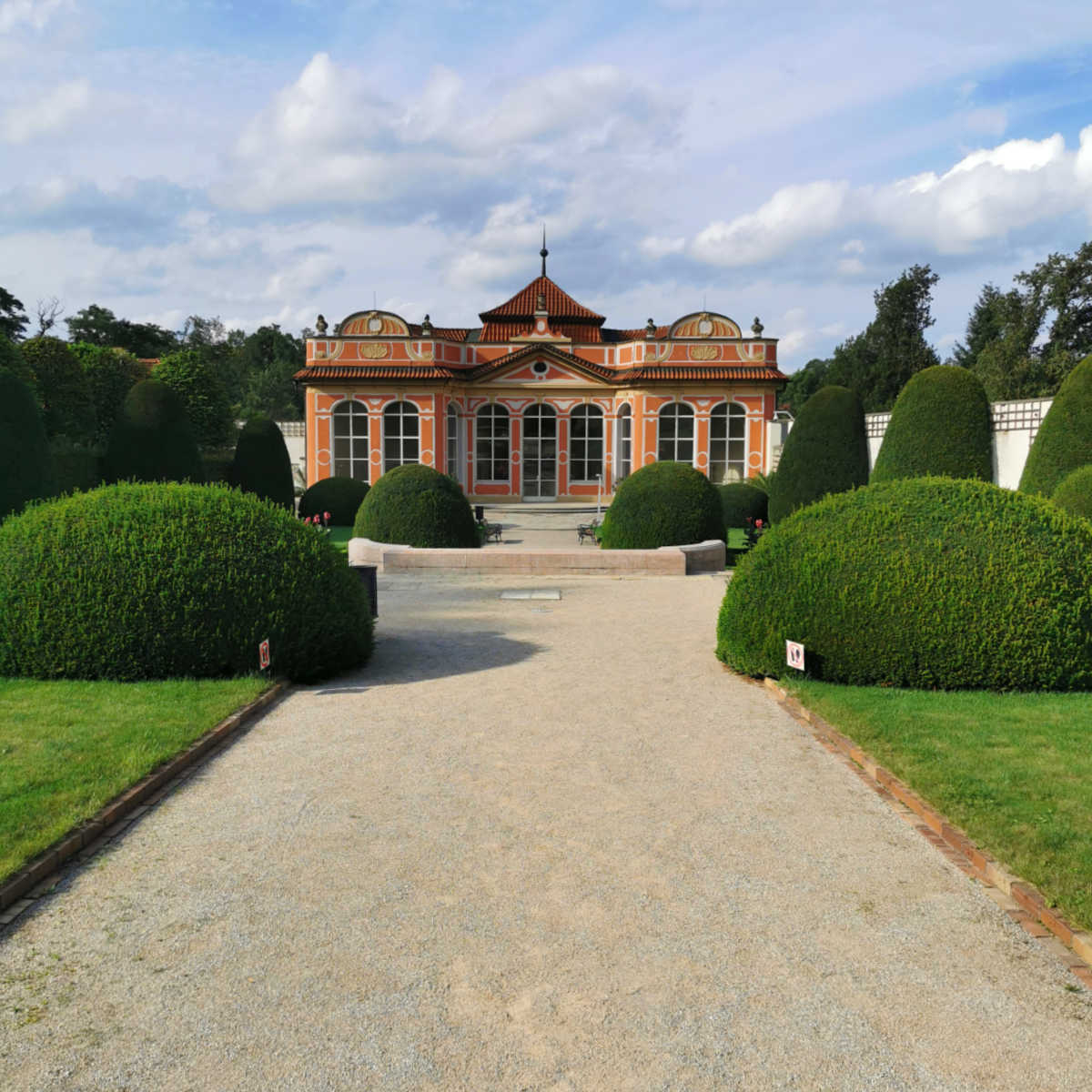
Day 2 – Morning
Today we start at Pohorelec tram stop and my favourite starting point for exploring the Hradcany area and see more than most people who get off at the Prague Castle tram stop.
First we will stop at the pretty Czernin Palace Garden, which is a serene and lesser-known garden right next to the longest palace in the whole Czech Republic – The Czernin Palace. It’s now a government building and closed to public, but opposite you can also find the beautiful Lorreta Church. It’s worth timing your visit around the whole hour, because the clock chimes a lovely little tune played by lots of little bells.
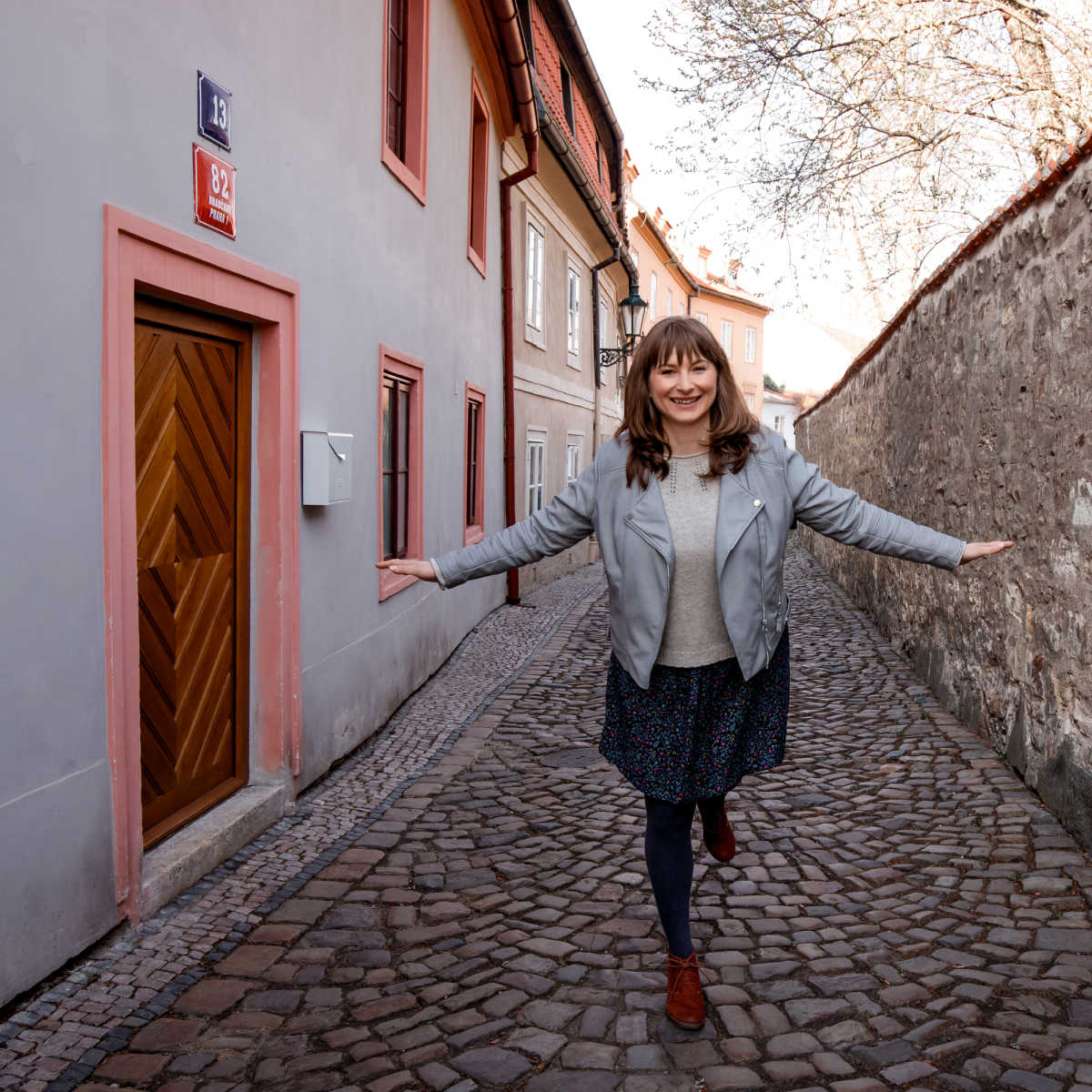
As you turn into the little streets next to Lorreta Square, you are now in the New World Area (Nový Svět), a quaint and less-touristy part of Prague with narrow cobblestone streets and charming houses. It’s a delightful area for a leisurely stroll and some great photo opportunities.
From there, head to the Hradcany Square, where you’ll see the Prague Castle. As the largest castle in the world (confirmed by the Guinness World of Record Book, thank you!), Prague Castle is a must-see.
But, I have to say, that as much as I love walking in the grounds of Prague Castle, I’ve only visited the castle interiors once and they were a little underwhelming. There is no furniture or rooms set out to give you an idea how people used to live there, it’s mainly decorated walls, lots of empty space and tons of information about the history.
Unless you are super interested in the castle and the history, you might like to save yourself 500 CZK and about 3 hrs of your time and just walk around the castle grounds for free by yourself.

You can easily spend a couple of hours exploring its vast grounds, including the stunning St. Vitus Cathedral, the Old Royal Palace, and the picturesque Golden Lane. This charming street, lined with colourful houses, once housed the castle’s guards and goldsmiths and entry is included in the castle ticket or come back after 5 pm to see the street for free.

Day 2 – Afternoon
After stopping for a while to admire the views from the top of the New Castle Stairs, make your way down Nerudova Street, a historic street that leads from the castle to the Lesser Town.
This street is one of the best one see the houses signs, which are painted above the entry doors. You will also find lots of souvenir shops and cafes here. My favourite ones include the ‘Kafe & Hrnky‘ where you can have your cafe in a small courtyard.
You might have already heard that you should try trdelnik in Prague and if you can move away from the fact that trdelnik is not a traditional Czech pastry and never really was, you can try one of the best trdelniks in the Cafe U Kajetana. I’ve had one with the plum jam (povidla) and it was pretty good as a sweet bread dough pastry with a cinnamon sugar on the top goes.
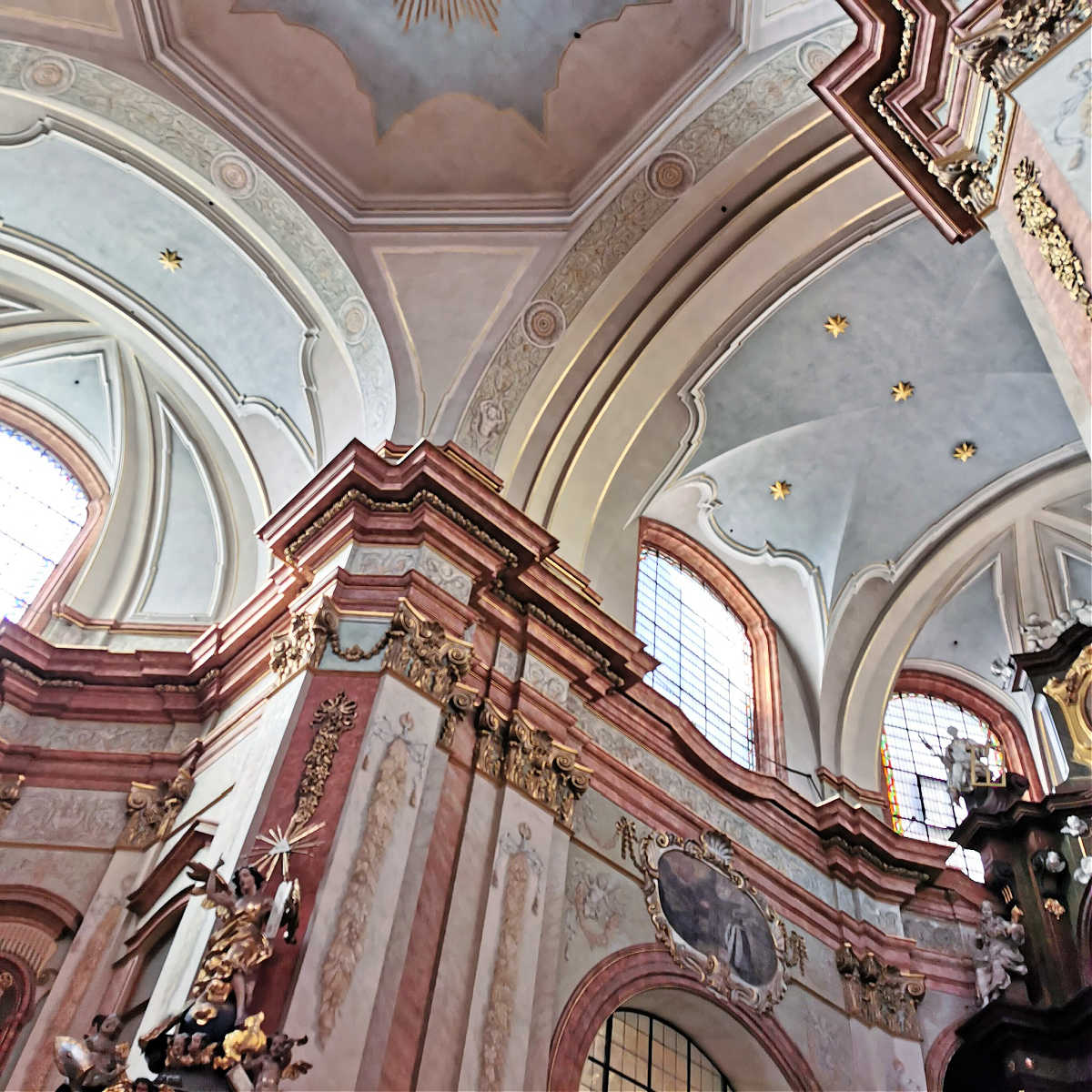
Right opposite, you will find one of the early examples of the architect Santini, the Church of the Virgin Mary – At the Theatines. The architect also designed two palaces on Nerudova Street (Thun Palace) and also lived here. He was buried in a church that doesn’t exist anymore, but you can see a commemorative plague on the wall just below the stairs to Jansky Vrsek.
There are more quirky streets as you walk down towards the Lesser Town Square, filled with picturesque houses and more shops. If you are interested in baroque architecture, then I’d suggest that you visit the St.Nicholas Church, which is the most beautiful of baroque churches in the whole Czech Republic.
If you have the time walk through the Snemovni Street until you find quiet square with a tree and local’s wine bar (Zasivarna u Fify, Valdstejnske Namesti 163/2). I always love how peaceful this little square feels, probably because the street doesn’t lead anywhere. In the past, this was one of roads leading to the castle, but later the gardens under the castle were built and the road was blocked with a house.
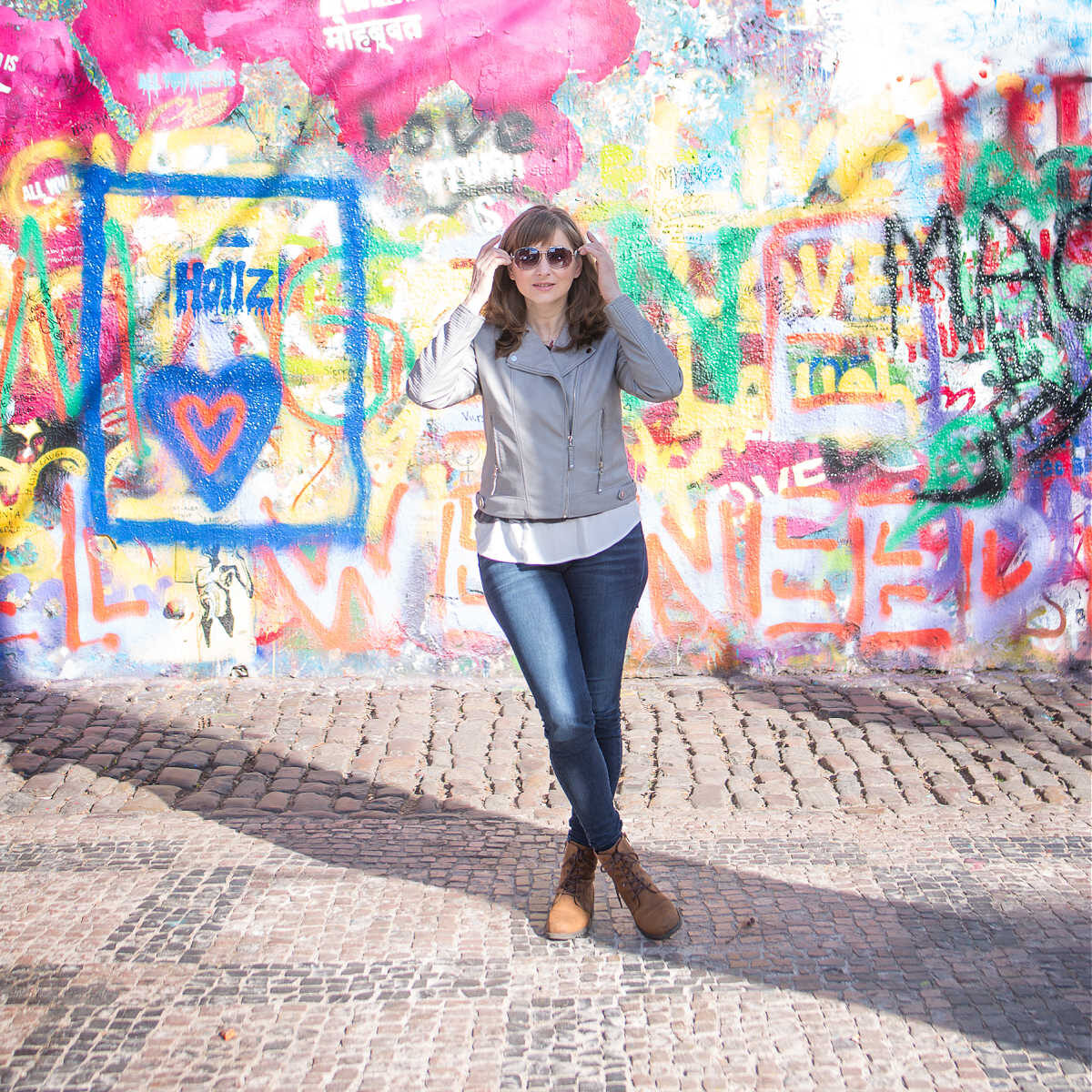
We will finish today with a visit to nearby Kampa Island, which is another peaceful oasis in the heart of the city. You can stroll along the riverside and enjoy the views of the Charles Bridge and the Vltava River.
Whilst you are there make sure that you also visit the John Lennon Wall, which is a tribute to the famous musician and a symbol of peace and freedom. The wall is constantly changing as the artwork develops, so it might look slightly different from the picture in your guide book.
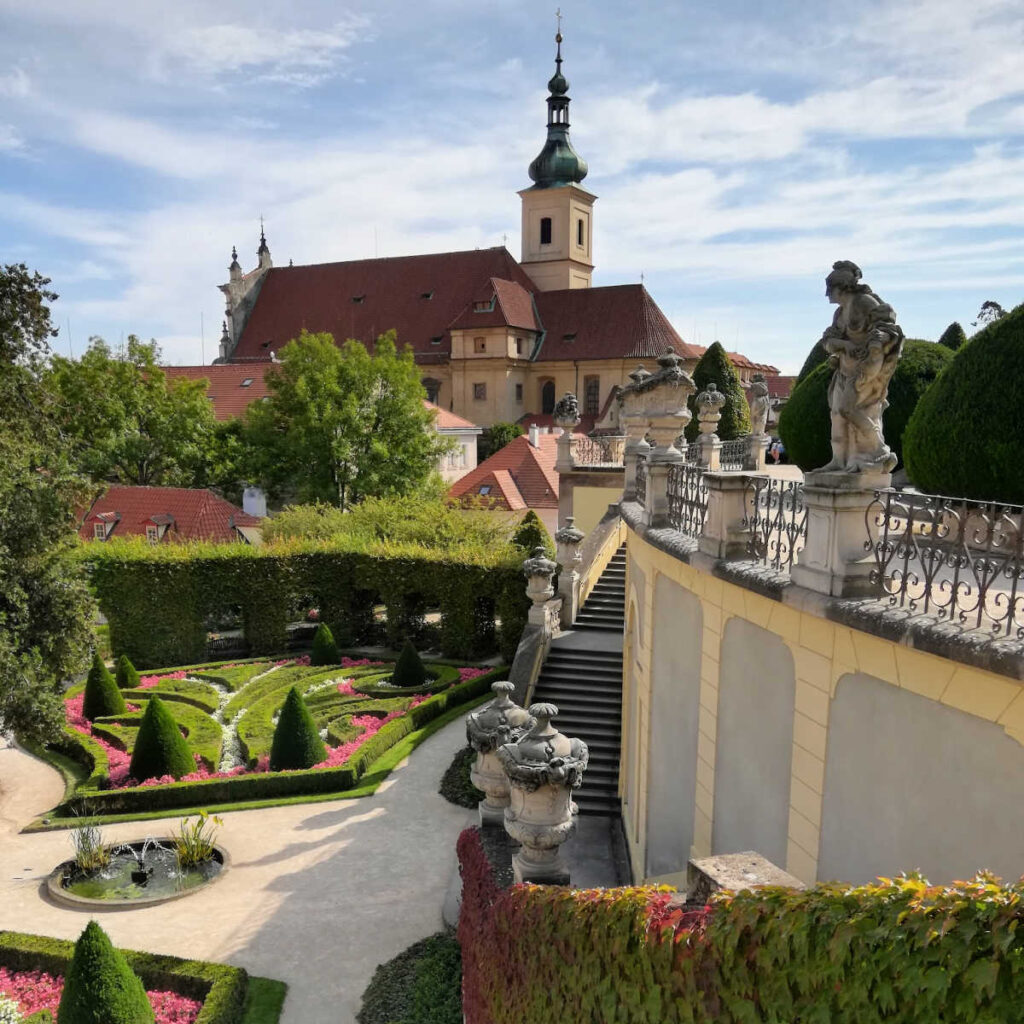
If the time permits, I’d also recommend to visit one of my favourite gardens – the Vrtba Garden. It’s easily one of Prague’s most beautiful Baroque gardens, It’s hidden behind houses and has several terraced gardens, sculptures, and stunning views of the city. It’s often open until 10 pm in the summer, so it’s the perfect place to finish your day.
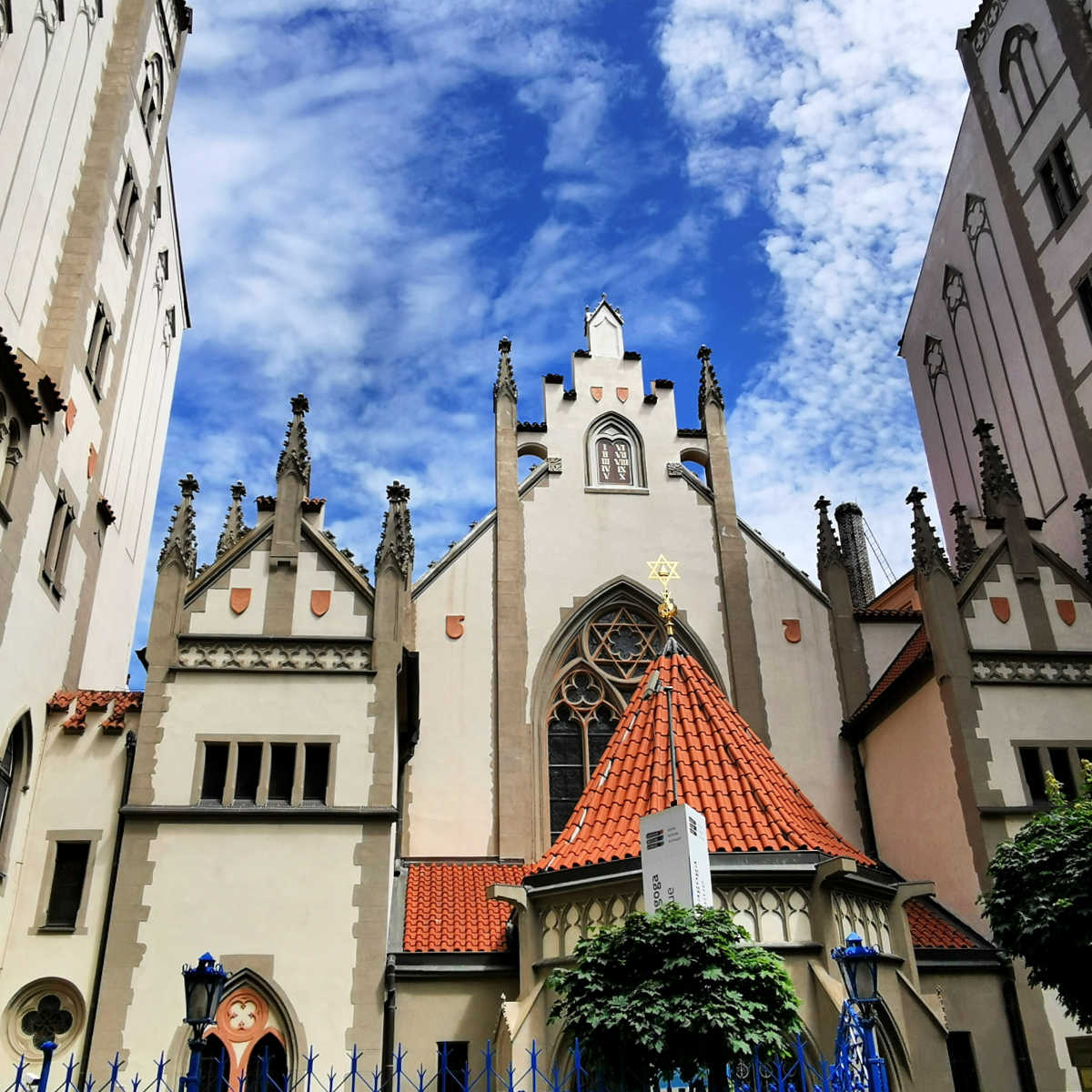
Day 3 – Jewish Quarter & Wenceslas Square Area
Jewish Quarter – Paris Street – Convent of St. Agnes – Powder Tower – The Municipal House – Na Prikope Street Shopping Galleries – Wenceslas Square – Franciscan Garden
Optional attractions along the way – National Museum, Museum of Communism, Palladium Shopping Centre
Optional areas to explore – Riegrovy Sady in the evening for a beautiful sun set, concerts & beer garden
Starting Point: Staromestska Underground Station or tram stop (17, 18, 2, 3)
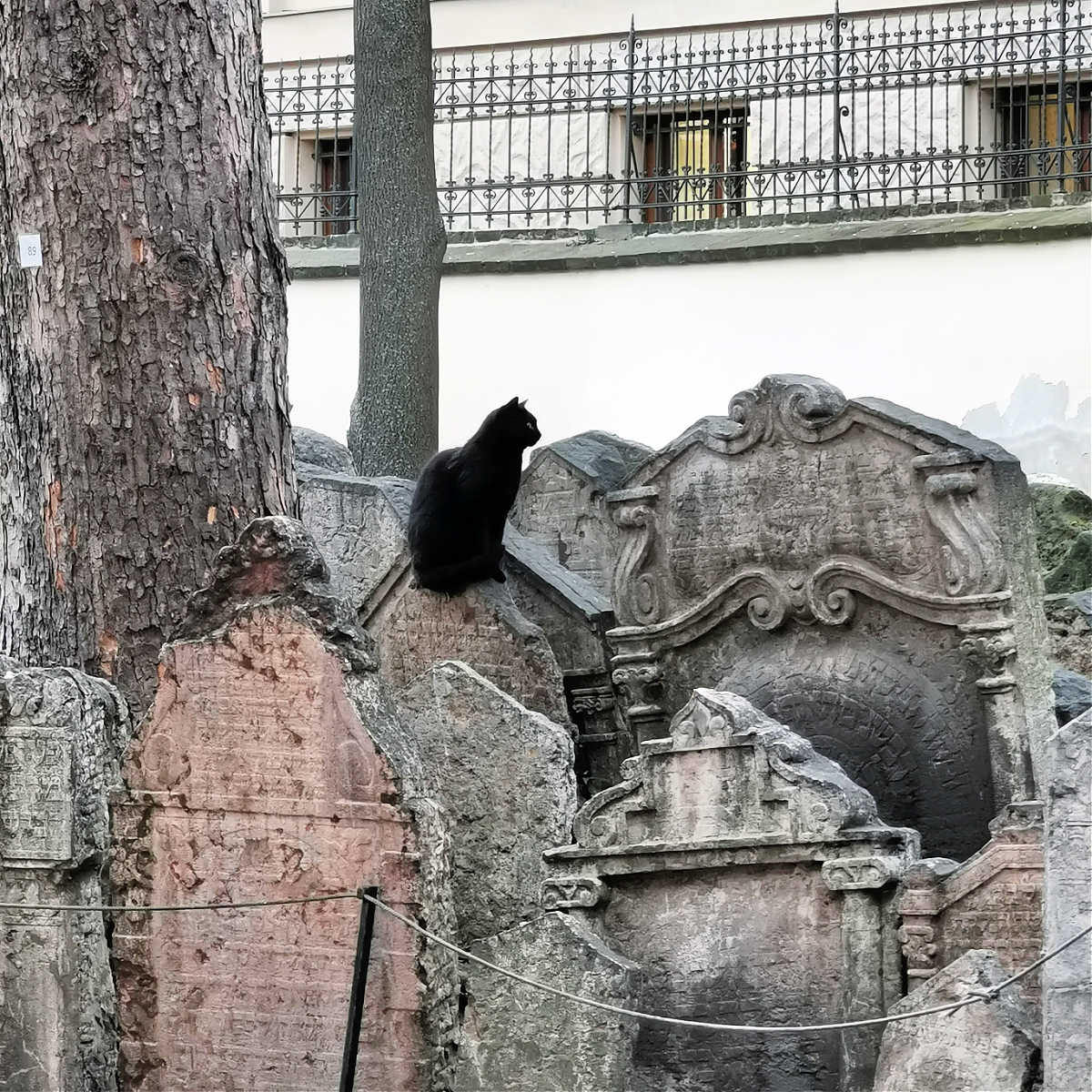
Day 3 – Morning
Today we start our day in Prague’s historic Jewish Quarter – Josefov district. You have a couple of options here, well three really…
If you want to have a look inside the synagogues, museum and the old cemetary, there is only one ticket combining all the attractions and costs around 550 CZK. In my experience, the visits can take easily 2-3 hrs or more as there is so much to see and you will definitely get a good understanding of the history of Jewish community in the Czech Republic and Prague.
The second option is to walk around the historic Jewish Quarter, to see all the synagogues from the outside, look through the gates to the old Jewish Cemetery and read a guide book (or my blog!) to learn more about the Jewish community in Prague.

On top of that (as a third option), I’d recommend visiting the Jerusalem Synagogue (Jindriska Street), which is the only one where you can buy individual ticket for. There are other Jewish cemeteries in Prague, that you can visit for free. One is next to the Zizkov Tower and the other one is at Olsany (Zelivskeho Underground Station).
The Josefov district is the smallest official area of Prague. The original Jewish Ghetto was condemned to “sanitation” as a poor district at the end of the 19th century. Only a few buildings remain from the ghetto, including the Jewish Town Hall, the Old Jewish Cemetery, and six synagogues: Klaus, Maisel, Pinkas, Staronova, Spanish, and High Synagogue.
The Old-New Synagogue is closely linked to the famous story about Golem, who’s creator is buried at the Old Jewish Cemetery.
One synagogue that’s slightly away from the Jewish Quarter, is the Jerusalem Synagogue, which has a very colourful facade and has interesting exhibition about the synagogue’s history. If you had more time in Prague, you can also visit more Jewish sites outside Prague, such as the Jewish Quarter in Kolin or synagogues in Plzen.
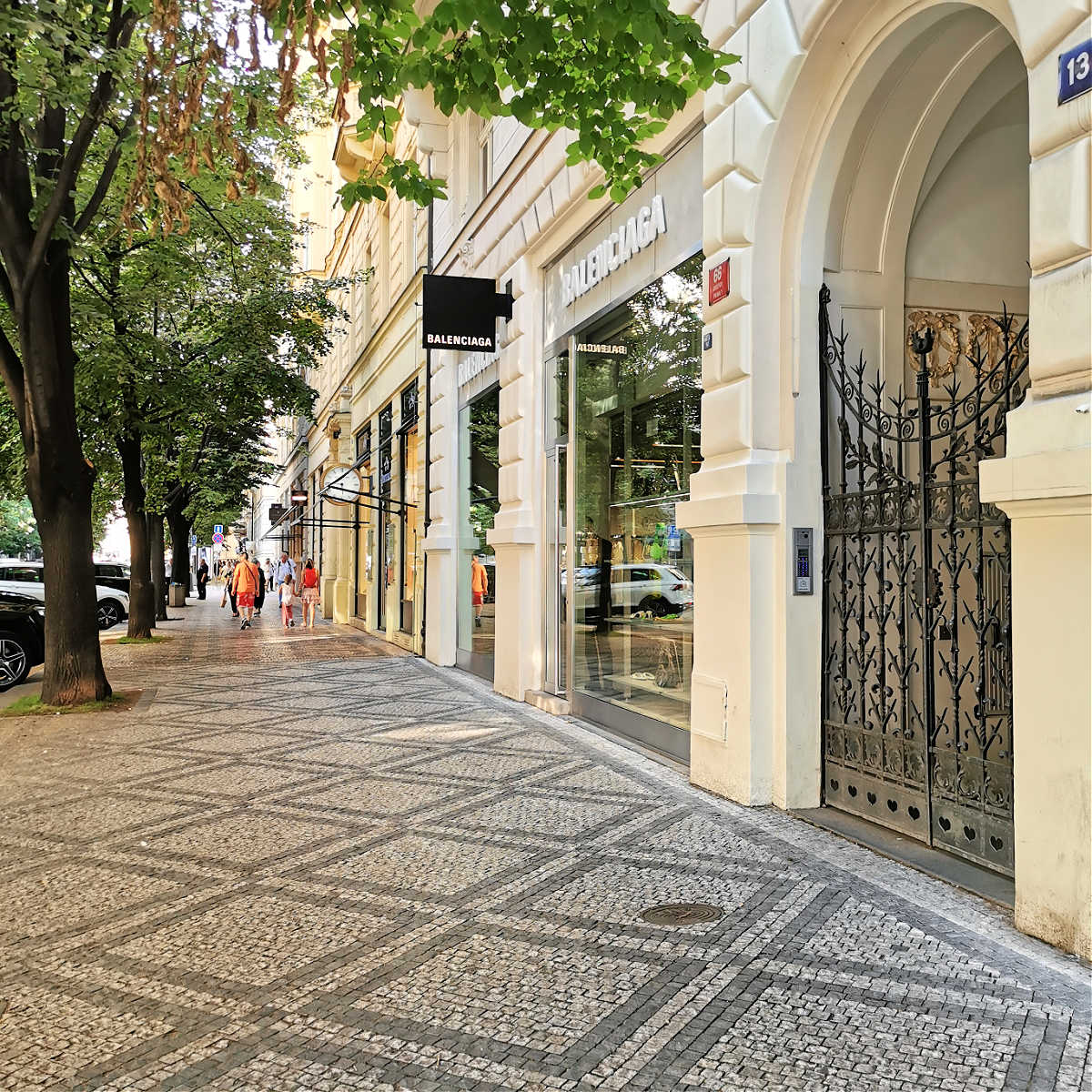
One street you can’t miss is the Paris Street (Pařížská Ulice), which is one of Prague’s most luxurious shopping streets, lined with high-end boutiques, cafes, and elegant buildings.
This street leads you back towards the Old Town Square, but today we will walk through the back streets, which have more local cafes, independent shops and local restaurants.
Keep to Siroka Street, where you can see the Spanish Synagogue and then walk through either ‘V Kolkovne’ or ‘Vezenska’ to get to a small little square. Explore the streets around nad continue through U Obecniho Dvora (or Hastalska and then Anezska) until you get to one of the best art galleries in Prague – Convent of St. Agnes.

If you are interested in medieval paintings and statues, then this is the best art gallery to visit, but I would like to suggest that you continue to Kozi Street and then to Na Frantisku to get to the back of the Convent of St. Agnes. There is a cloister garden, church of st Salvator and more buildings excavated from where this part of the Prague was a convent with bustling streets behind.
I absolutely love this corner of Prague, it’s so peaceful there and the best thing is it’s all free to access. As you walk around you can get right to the back of the museum and sit in the garden which is part of the museum cafe – Anezka Cafe. Last time I visited it was a warm autumn day and I sat there with a hot cup of coffee reading a book, which was a complete bliss!

After that I usually walk through the garden to Rasnovka and then through Hastalska and Rybna back to the Old Town Square or through Benediktska Ulice to the back of Kotva Department Store and then to Namesti Republiky (and the Municipal House)
As you walk through the streets, you will find more local shops, cozy cafes and restaurnat like the famous ‘Nase Maso’ where you can choose your meat first before they cook it for you.
My favourite cafes near by: Cafe Soukenda (Soukenicka), Cafe at Kampus Hybernska,
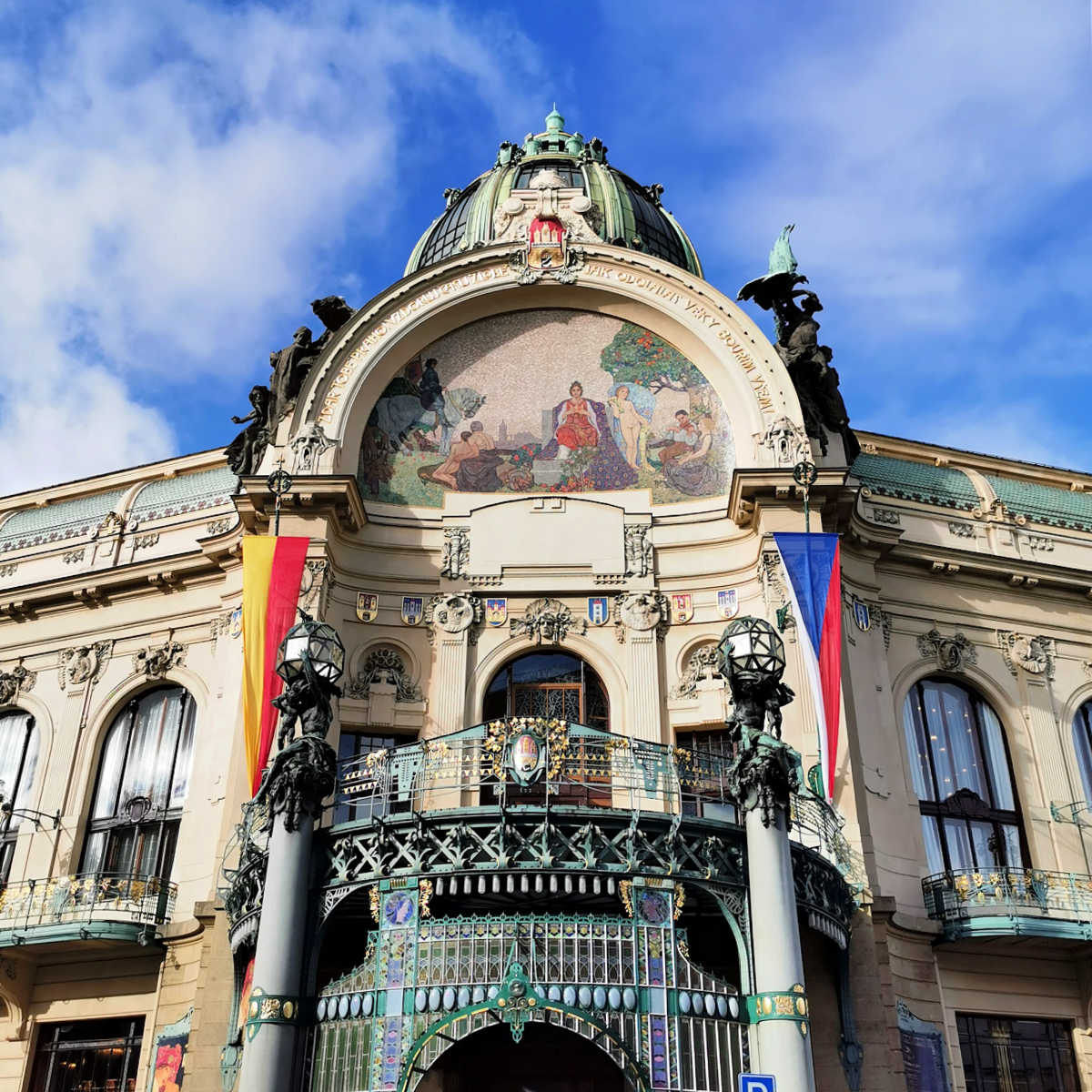
Day 3 – Afternoon
The next stop on our self-guided tour is the nearby Municipal House, which is an Art Nouveau masterpiece that often hosts concerts and exhibitions. You can also have a lunch here (very pricey in the French Restaurant on a ground level, but super affordable at the traditional Czech pub downstairs).
You can visit Municipal House and just have a look around in the public areas yourself, or you can also take a guided tour of the building, that takes you to the large concert hall and other rooms beautifully decorated and painted by the famous Czech painter A. Mucha (that you can’t normally see).
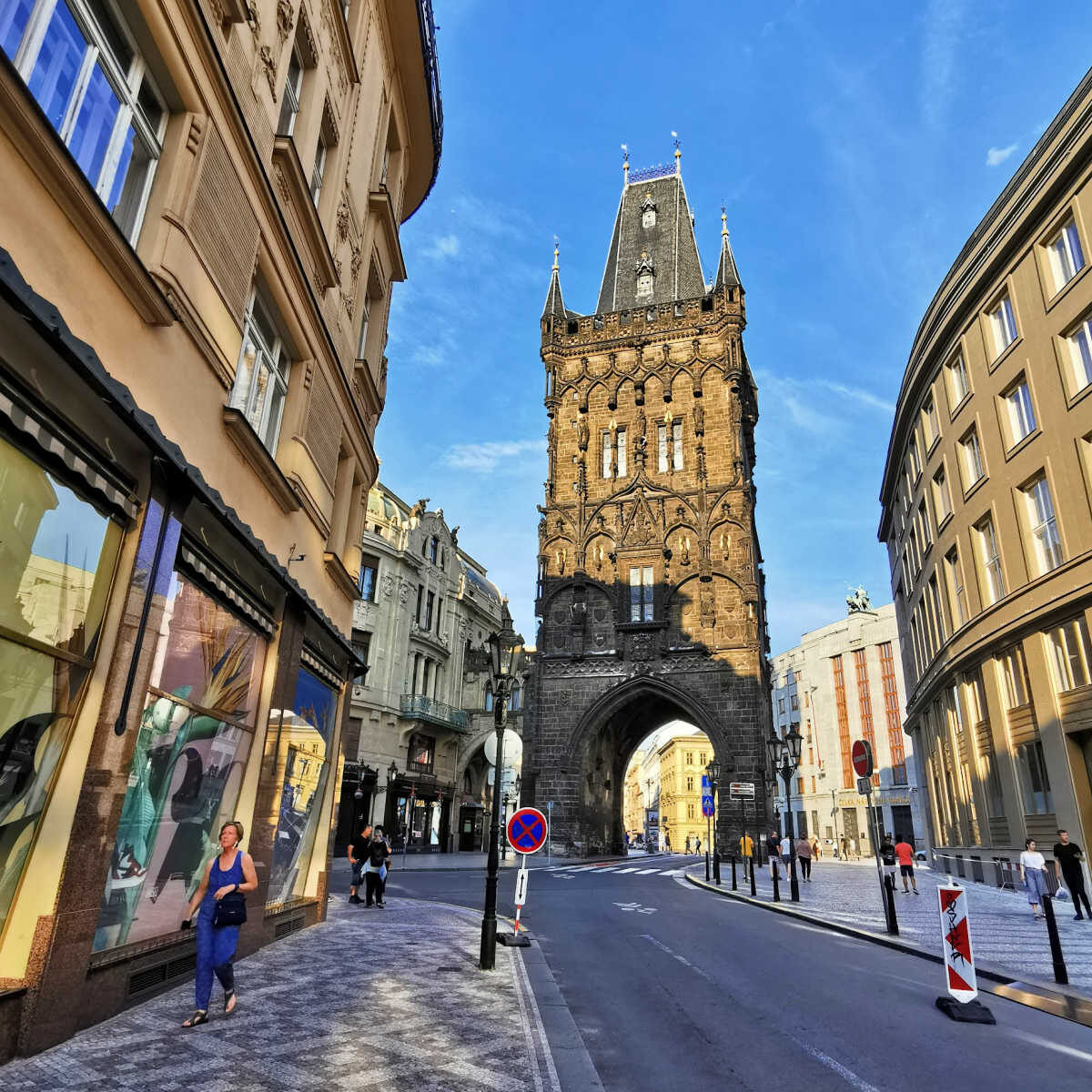
Next to the Municipal House is the Powder Tower, a Gothic tower that once formed part of the city’s fortifications. You can climb to the top for panoramic views of Prague and the Prague Castle in the distance.
Continue your journey along Na Příkopě Street, a bustling shopping avenue that connects the Old Town with Wenceslas Square. Here, you’ll find a mix of international brands and local shops, perfect for some retail therapy. I particularly like the shopping arcades, which are great for walking through if it’s raining.

If you are planning to see the Jerusalem Synagogue, you can use the Passage of Czech design as a short cut, which takes you directly to Senovazne Namesti and once you cross the street, you will see the synagogue at Jeruzalemska Street.
You can also check out the Galerie Teleport, the Myslbek Gallery (one of the more modern shopping centres in Prague) or the Slovansky Dum Gallery which hides a lovely courtyard with trees and green plants.
You will eventually arrive at the bottom part of Wenceslas Square, a lively boulevard that is both a commercial centre and a historical site. There are large shops and department stores here, restaurants and fast food chains.
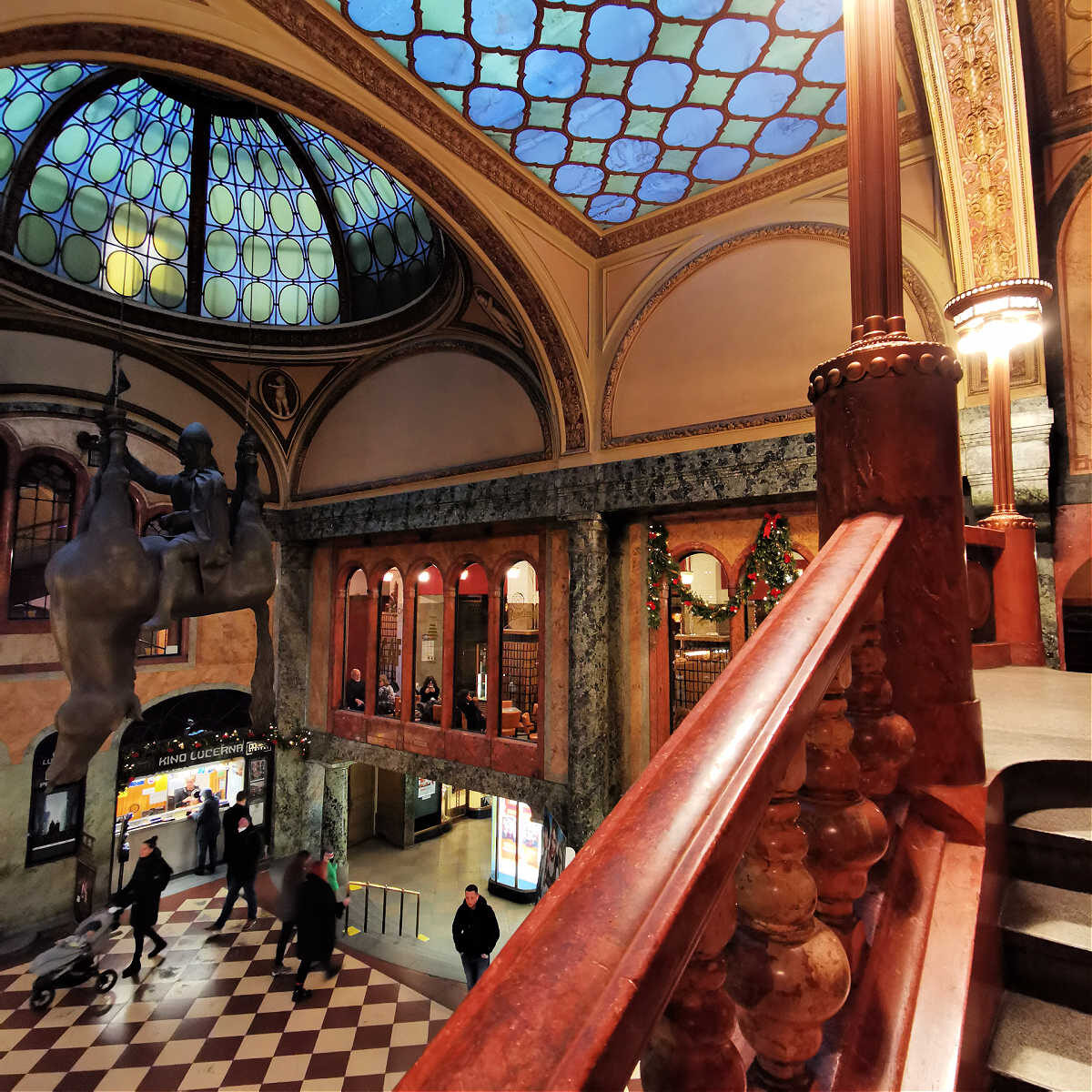
But instead of the modern shops, I normally head for the traditional shopping arcades like Svetozor, Lucerna or Palac Fenix, where you can find local cafes, shops, old cinemas and theatres.
One of the best fruit sorbets and ice-creams in Prague are in Svetozor passage. I used to come here as a teenager and it’s still one of my favourite places. I always take my ice cream to the nearby Franciscan Garden, which is a little hidden park, flower garden with plenty of benches to sit on.
Afterwards you can continue to walk up pass the statue of Saint Wenceslas and the National Museum at the top of the square.
Optional: From the Wenceslas Square, make your way to the Jerusalem Synagogue, a beautiful example of Art Nouveau architecture and easily the most colourful building in Prague.

Optional: Before concluding your day, make sure to see the only Cubism Lamp in the whole world, which is near Jungmanovo Namesti.
You can also see the Adria Palace on the corner of the Jungmanovo Square and then continue to Narodni to see the new Spitfire Butterfly Statues on the newly re-opened Maj Department Store. If you walk through the shopping centre next to Maj, you can also see the Franz Kafka Rotating Head Statue nearby.
Optional: Roof restaurant at Maj with a beautiful roof top views of surrounding houses and Prague (or the only self-service eatery with fast food chains and about sixty huge chandeliers – this is the Prague version of luxury eating on budget!).

Day 4 – Vysehrad & Smichovska Naplavka
Main Stops: Vysehrad Castle Grounds – Naplavka – Emauzy Monastery – Botanical Garden at Karlov – Operation Anthropoid Museum & Church – Ginger & Rogers Dancing House – Slavic Island – Shooters Island
Optional attractions along the way: Vyton Museum of Vltava & river trade at Podskali,
Starting Point: Vysehrad Underground Station (line C)

Day 4 – Morning
This morning we will start at Vysehrad Underground station on line C, which is about 15 minutes from the centre of Prague. From there we will follow the ‘Na Bucance’ and ‘V Pevnosti’ street which will takes us first to the Taborska Brana and through Leopoldova Brana to the Vysehrad Fortress Area.
There is quite a lot to explore here, including the Rotunda of St.Martin, the Old Castle Casemates, St Peter & Pavel Basilic and the Vysehrad cemetery with all the well known Czech people.
There is also a great view from the little vineyard, several cafes, children playground and walks around the fort walls. The best thing is that the general entry is free and you just pay to see whatever attraction you want.

There is not much left from the original castle or the fort, so I always think the best way to explore Vysehrad is just to walk around. One place that’s very different is the St.Peter & Paul Basilic as it’s beautifully decorated inside.
Once you’ve done exploring the Vysehrad grounds, walk down through the last Cihelna Brana gate and follow the Vratislavova Street down the hill.
This street has some lovely independent cafes, wine bars and restaurants. My favourite cafe is Kavarna Cekarna (Cafe Waiting Room at Vratislavova 30) that has amazing little courtyard between the houses. They have great coffee, homemade cakes and you can even get toasted sandwiches.
Also right next door at number 31 Vratislavova you can pop in for a lunch at school for people with learning disabilities. It’s one of my favourite self-service restaurants in Prague, but it’s only open Monday – Friday until about 2 pm during the school term because it’s run by young adults who are training to work in restaurants and catering services.
Before you head for the Smichovska Naplavka, you can also walk slightly back following the Vltava River to have a look at some of the most amazing houses in Prague built in cubism style. The most prominent is the Kovarovicova Vila, which stands on the corner of Rasinovo Nabrezi.
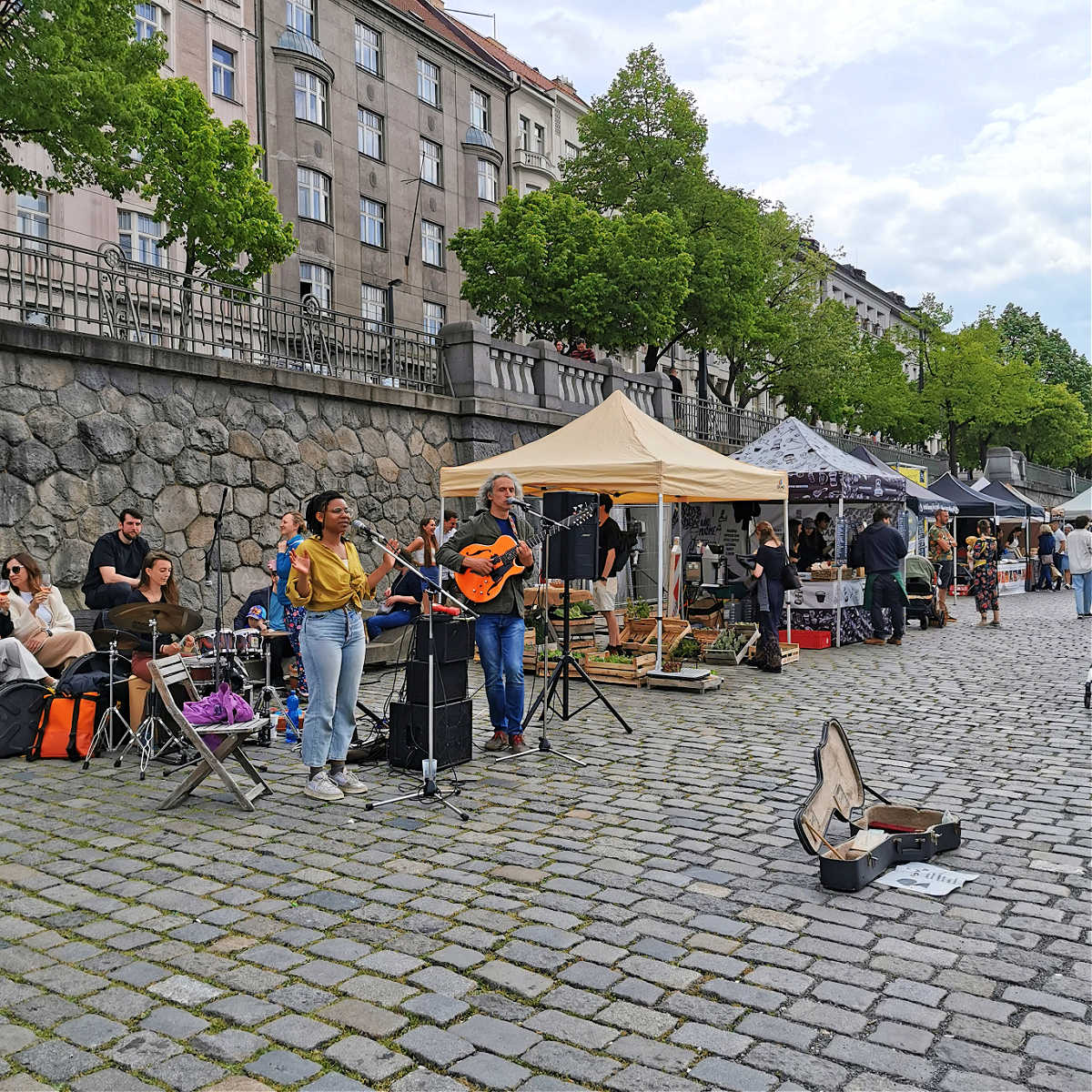
Day 4 – Afternoon
Next I always walk down the steps to walk on the Smichovska Naplavka, which is a river bank next to the Vltava River. If you time your visit to Saturday morning you can catch here one of the best farmer’s markets in Prague.
The rest of the week, you can see here restaurants and bars on the boats and cafes in old tunnels under the river banks. It’s a great place to walk with a view of Petrin Hill and Prague Castle in the distance. In the summer there are little boats crossing the river and you can explore the other side of Naplavka too.

Before the Naplavka meets the Palackeho Most (Bridge) we will walk up to the top street and take the Trojicka Street to take us to the most amazing hidden botanical garden in Prague. It’s the oldest botanical garden with a couple of greenhouses with rare plants and birds. There is a small entrance fee to the greenhouses, but the outside garden, which is quite large, is completely free to enter.

Next we will walk up to Emauzy Monastery following the Vysehradska Street and then Na Slovanech. There is really great view from the little square in front of the main monastery church and you can also find a little cafe here (open during summer time).
If you have the time to visit the monastery inside, I thoroughly recommend it. It’s very peaceful there and the buildings are well preserved despite the bumpy history. I’m looking forward to see the gardens being restored and opened to public at some point in the future.
If at this point you need to stop (and I don’t blame you…) there is a lovely cafe at the CAMP (building next to Emauzy), where they have a fabulous homemade soups, light snacks and fab coffee. Another coffee option is ‘I Need Coffee! (Na Morani 1958) or if you need a fast food, try the traditional Czech food at Vaclavske Bistro (Vaclavska Pasaz, Karlovo Namesti) which is open every day until late.
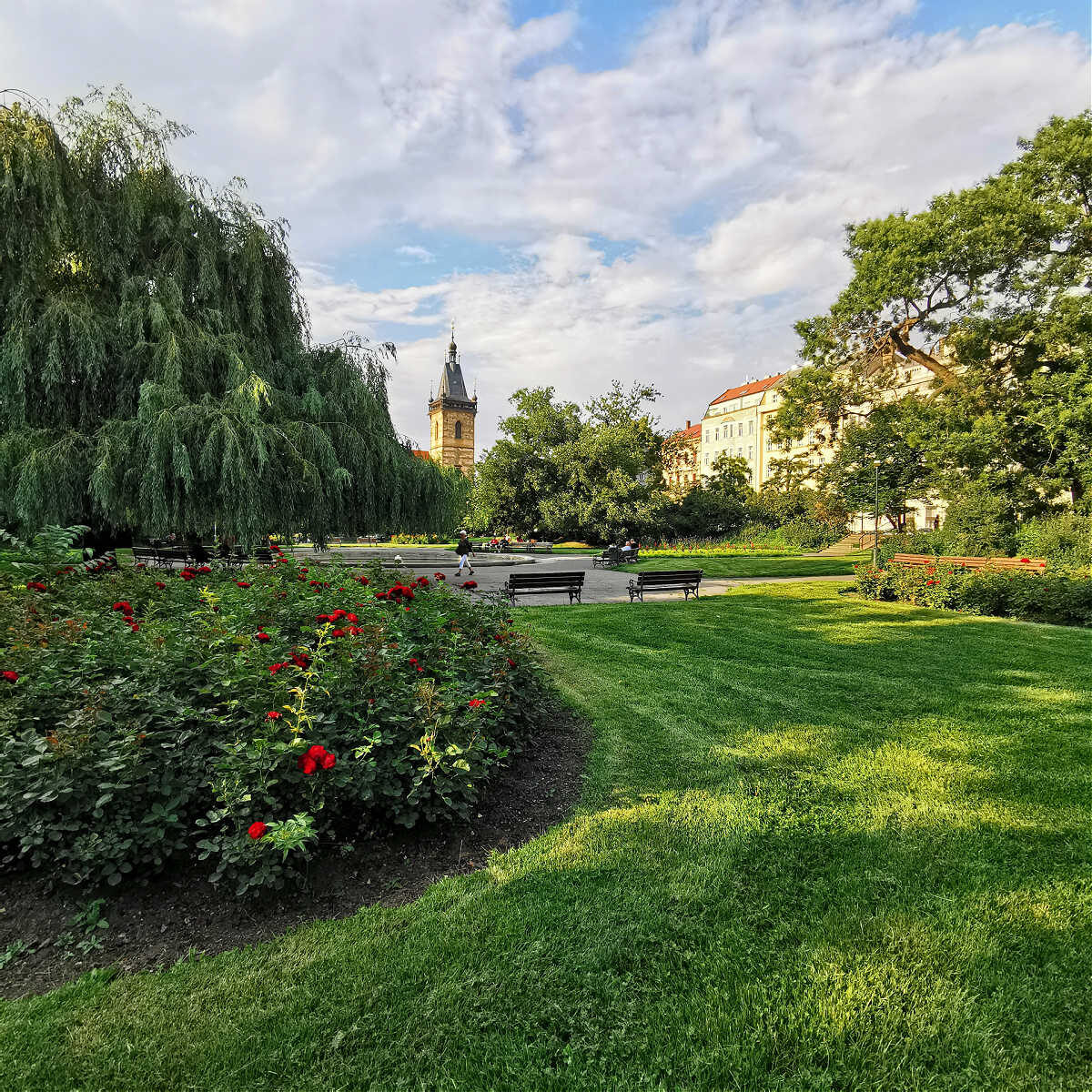
Walk through Karlovo Namesti, which is one of the most historic squares in Prague (and the biggest one in the whole Czech Republic) and then take the Resslova Street on the left down to the Vltava River.

This street will take you to the Ss. Cyril and Methodius Cathedral, which was a crucial place in the Czech resistance during the 2nd World War. There is also a free museum in the church crypt, where the soldiers were hiding and you can find out more about the operation Anthropoid here (entrance is free).
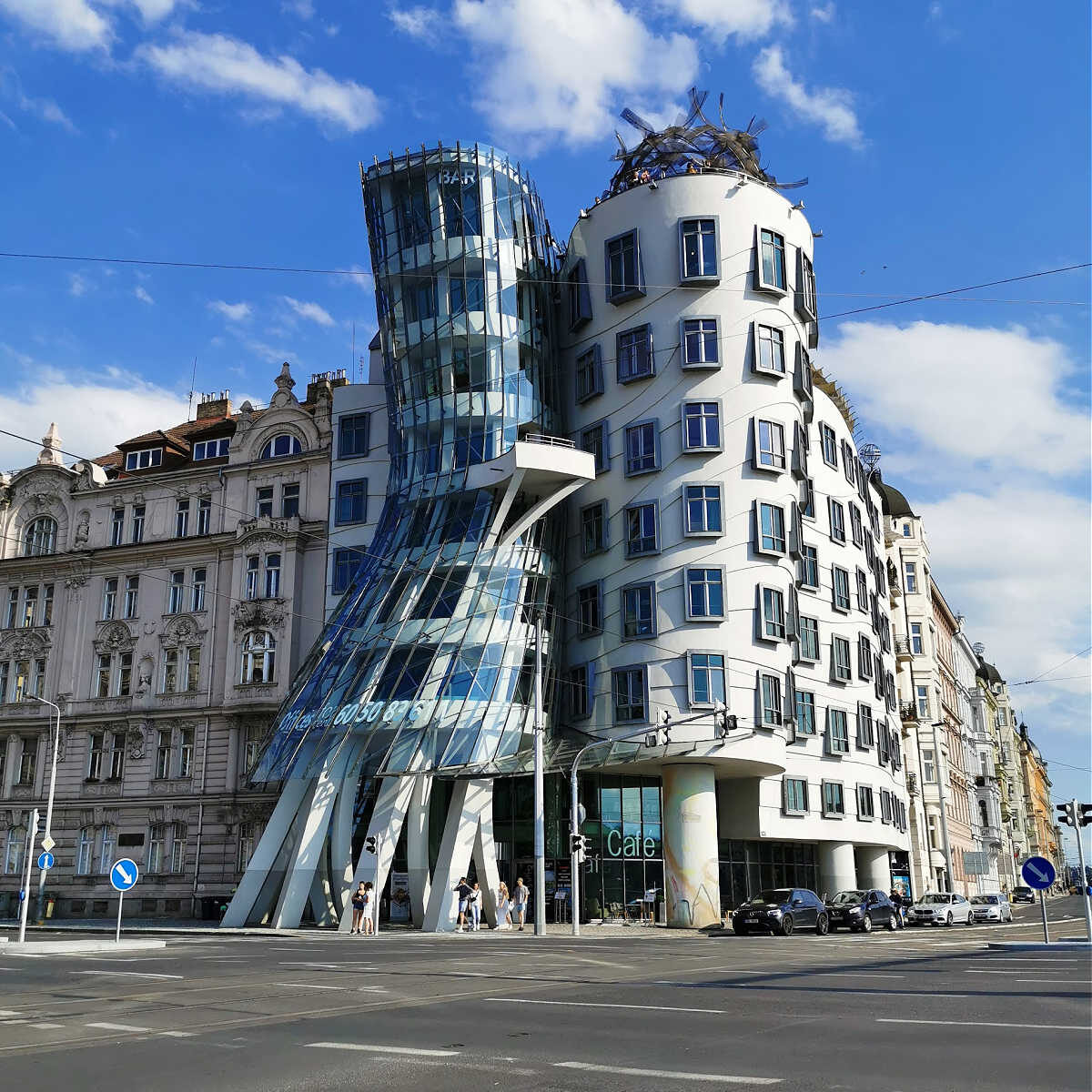
Resslova Street will take you directly to the famous Dancing House with a roof top bar and an art gallery at the ground floor.
If the weather is nice, you can rent a river paddle boat from the Slavic Island or listen to a concert at the Shooter’s Island (access from the Legion Bridge).
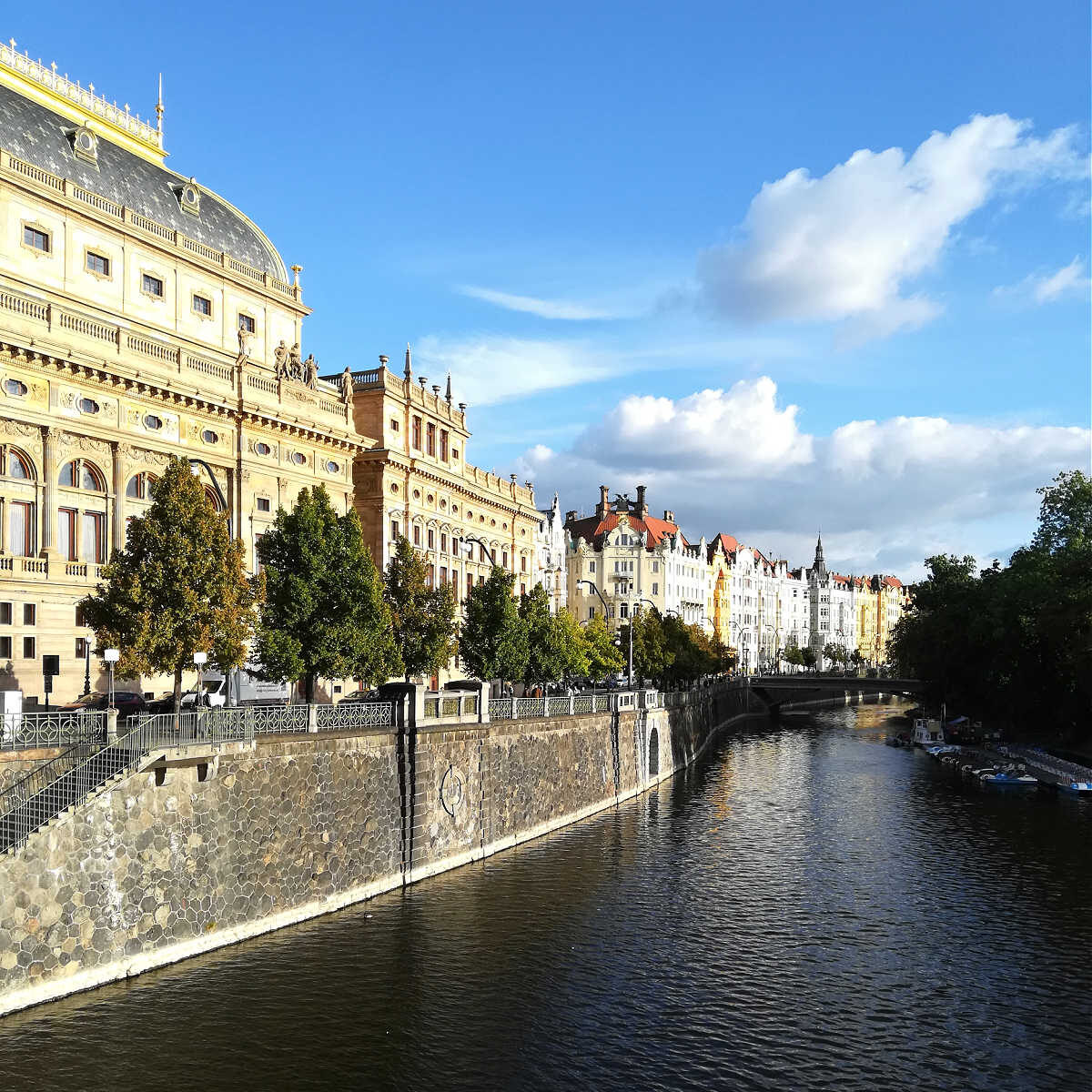
I also often pop in to the National Theatre which is just at the end of the bridge. This theatre is one of my favourite theatres in Prague and most performances now have also English subtitles. The theatre puts on the best operas, ballets and traditional plays including Mozart, Shakespeare, Smetana or Janacek.
The historic cafe Slavia, which is opposite the theatre is open every day until 10 pm (and has an evening dinner menu), so it’s the perfect way to finish your fourth day in Prague there with the views of Prague Castle and Charles Bridge.

Day 5: Petrin Hill & Strahov Monastery
Main Stops: Kinsky Garden – Hunger Wall – Petrin Hill Park – Lookout Tower – Strahov Monastery & Baroque Library – Vlasska Street – Jansky Vrsek
Optional attractions along the way: Folk Museum, Mirror Maze Muzeum, Museum of Miniatures, The Stefanik Observatory, Museum of Alchemists and Magicians of Old Prague, Museum Montanelli
Starting Point: Svandovo Divadlo tram stop on the 9, 15, 12, 20 tram line

5 Day – Morning
Today we will start our walk from Kinsky Square. If you fancy a super posh breakfast on your last day in Prague, then I’d recommend the nearby Cafe Savoy (Vitezna 124), but book in advance as this place get’s often booked up.
If you don’t want to re-mortgage your house, then the ‘Spot’ Cafe at Kinsky Square is equally lovely. I also often visit the ‘Mezi Radky’ cafe (Stefanikova 278) because it has good coffee, excellent breakfast and they employ people with mild mental health issues helping them to get back to work and to gain more social confidence. I like that by eating my breakfast there I’m helping others!
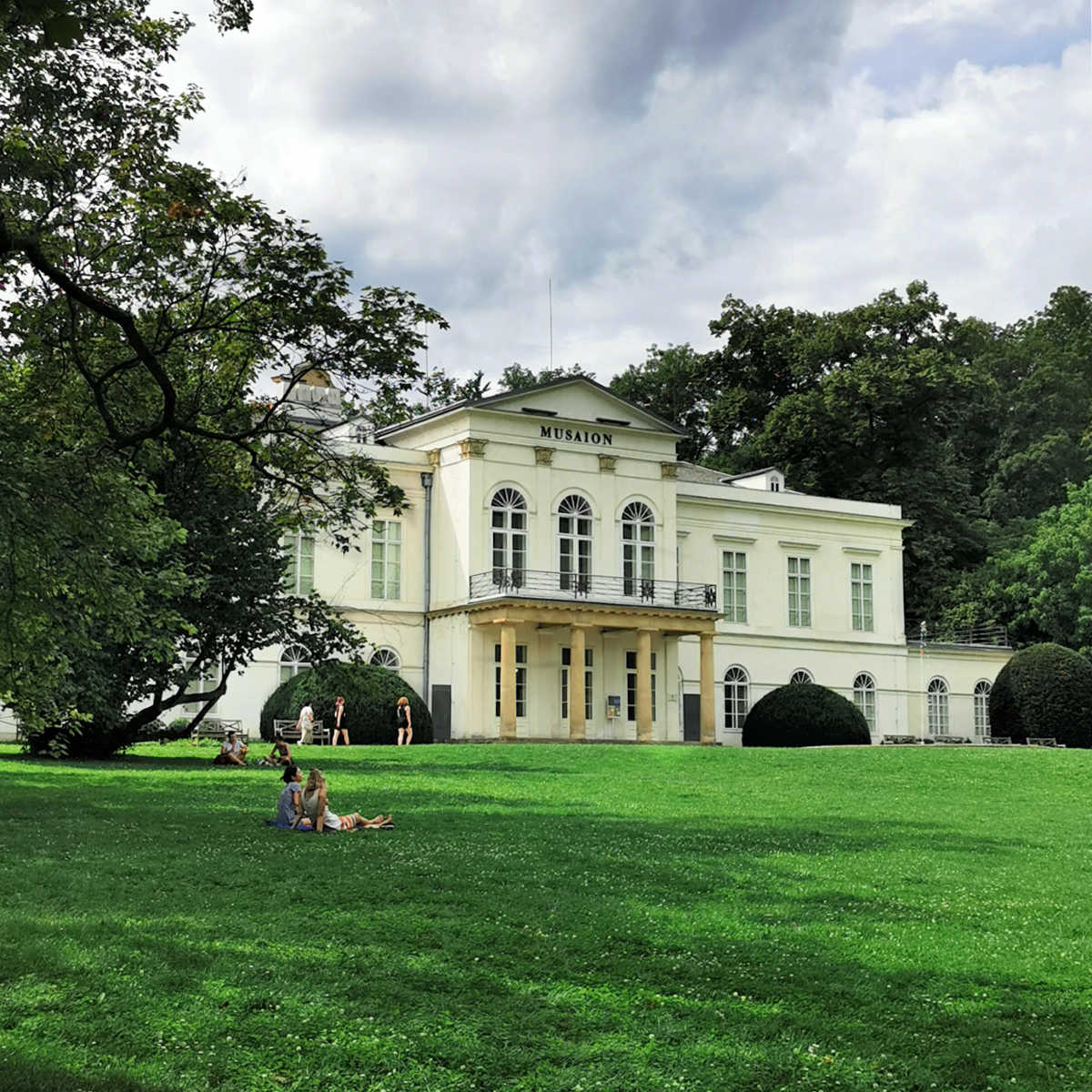
We will first walk towards the Kinsky Chatteau, which is now the National Folk Museum. It gives you an idea how this part of Prague was once removed and felt like you are in the countryside. If you fancy learning more about old Czech customs and folk traditions, you can also visit the museum inside. It’s a lovely building and the entrance fee is inexpensive.

But for now, we will continue up the winding paths until we reach the little water pond. You can either walk directly up to get to the Petrin Rose Garden and the rather pretty sunken Flower Garden.
Or you can carry on walking on a level paths around the Petrin Hill to get the most amazing views of Prague Castle Hill. At some point you will walk through a high wall, which is called the Hunger Wall and was built originally to give poor people something to do during Charles IV reign.

The Petrin Lookout Tower at the top of the Petrin Hill is a miniature copy of Paris Eiffel Tower and you can get a really good view of Prague from there. If it’s windy the tower sways a little, when you are on the top, but only ever so slightly. Last time I visited, I managed O.K, but it was an interesting experience!
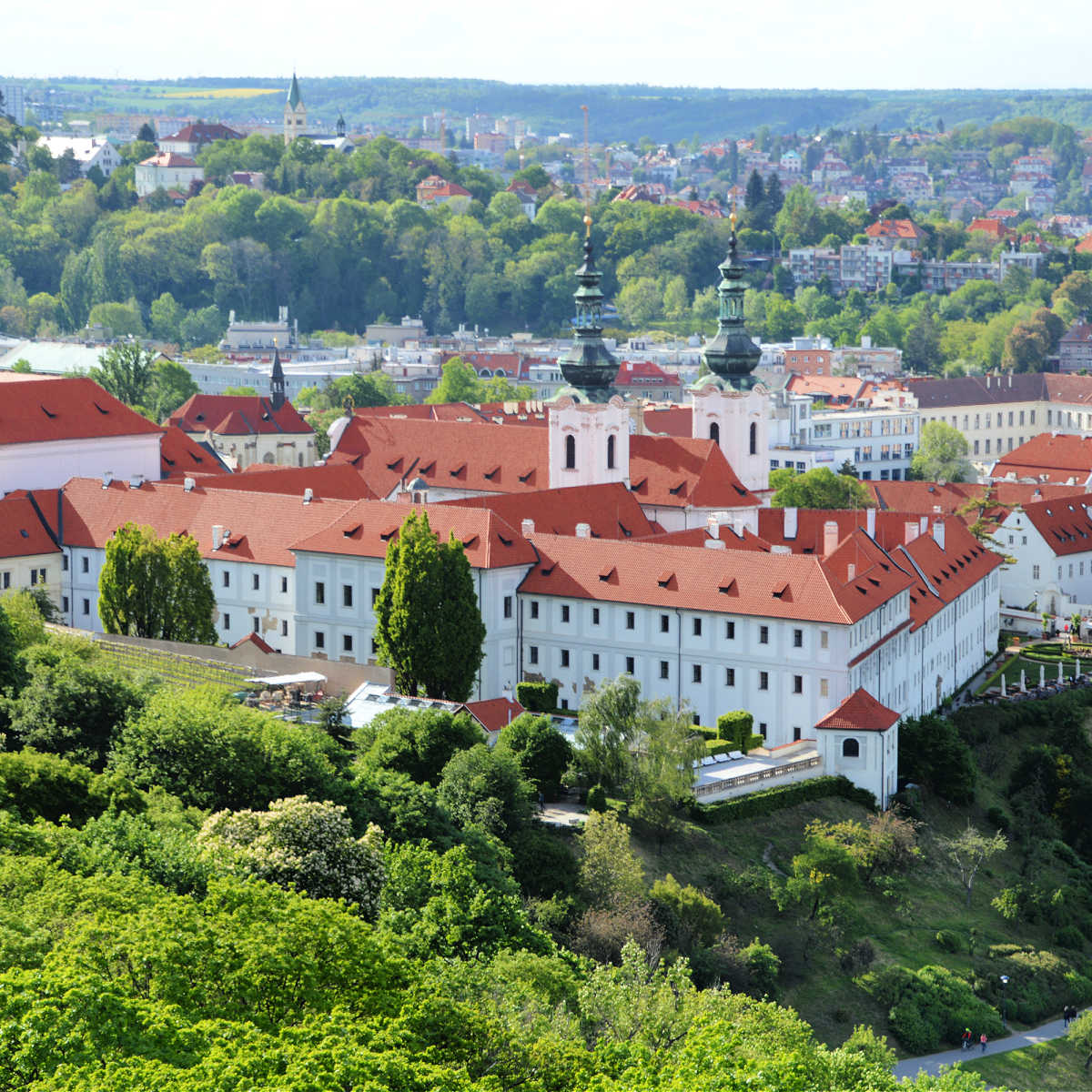
5 day – Afternoon
Continue walking along the Hunger Wall until you reach the complex of the Strahov Monastery with it’s beautiful Baroque Library. Here you have an option to visit the church, the library or take the whole tour of the monastery. There is also a great brewery called The Strahov Monastery Brewery or St.Norbert and you can sample any of their 25 different types of beers in their restaurant and a beer garden.

To finish your last day in Prague, walk just slightly outside the Strahov Monastery to get the most amazing view of Prague from there.
To get back to the centre of Prague, walk through any of the little streets taking you down the hill or through the Strahov Gardens to Vlasska Street, which is full of wonderful houses, quirky cafes and old palaces.
This is a very lovely part of Prague that not a lot of people come to, which makes it even prettier. My favourite little place here is the Jansky Vrsek and Janska Street, which finish with steep steps up to Nerudova Street. Another lovely street is the Trziste, which ends up as a house passage, which takes you to Museum Montanelli (art gallery) and again to Nerudova Street.
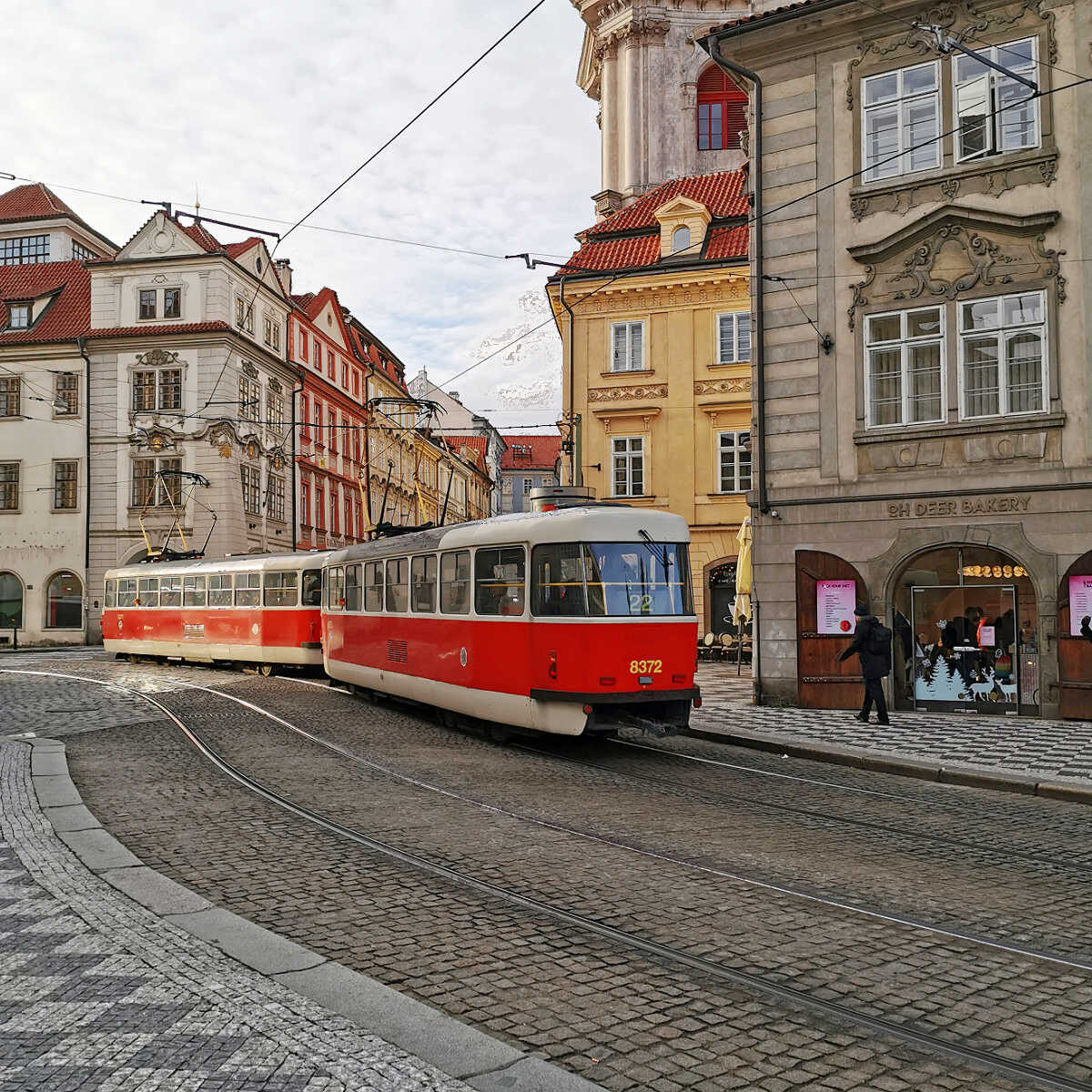
You’ll eventually come down to the Lesser Town Square and can carry on exploring places you might have missed before, or just sit down and enjoy a cup of coffee at the Malostranska Beseda (which is a traditional restaurant with separate cafe and it’s also one of the best jazz venues in Prague) or I also often get a coffee at the coffee cart in front of the Lesser Town Church of Our Lady Victorious, where you can learn about the Infant Jesus of Prague.
This blog post was originally written on 4 September 2025 and last updated on 4 September 2025






